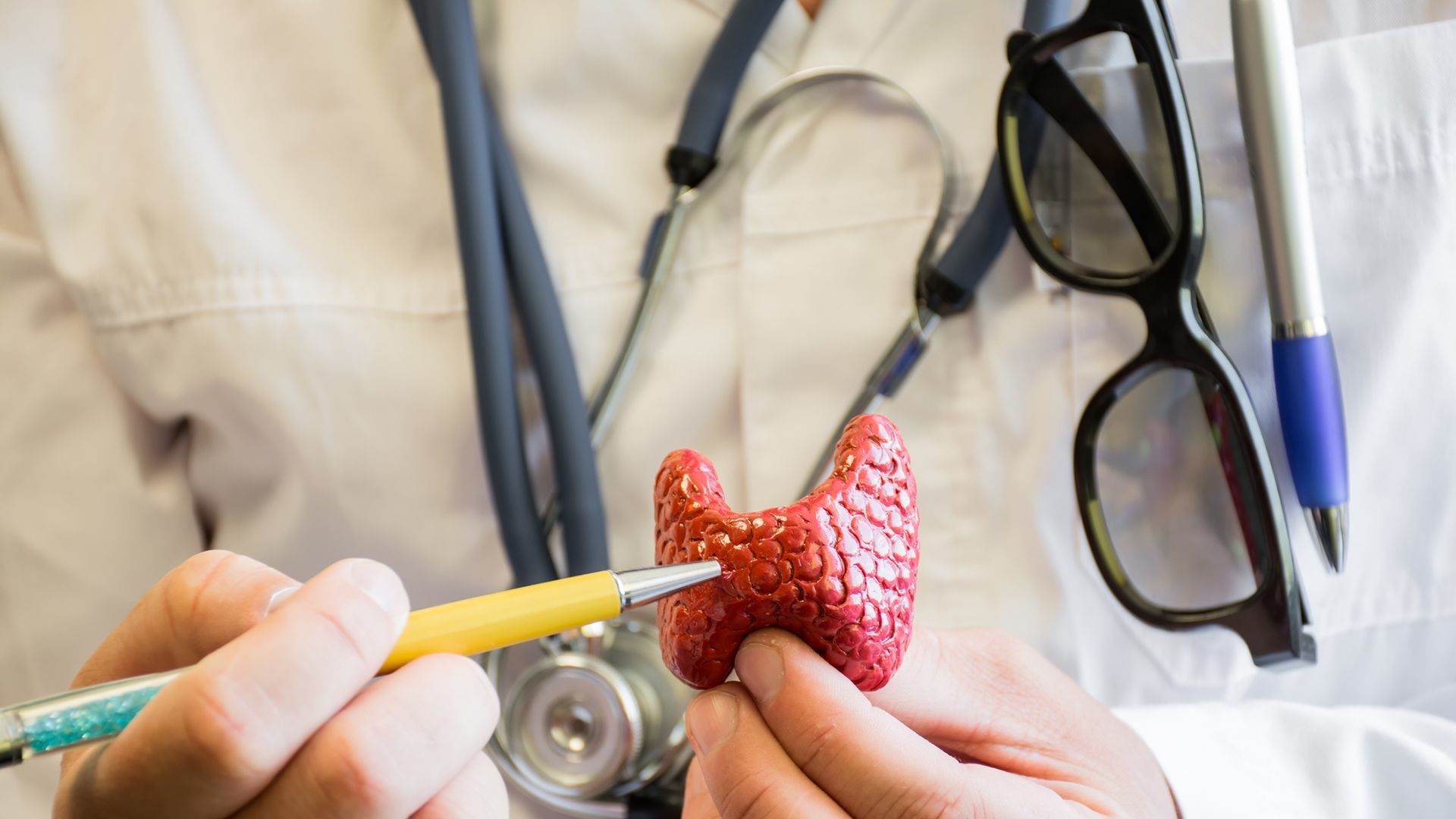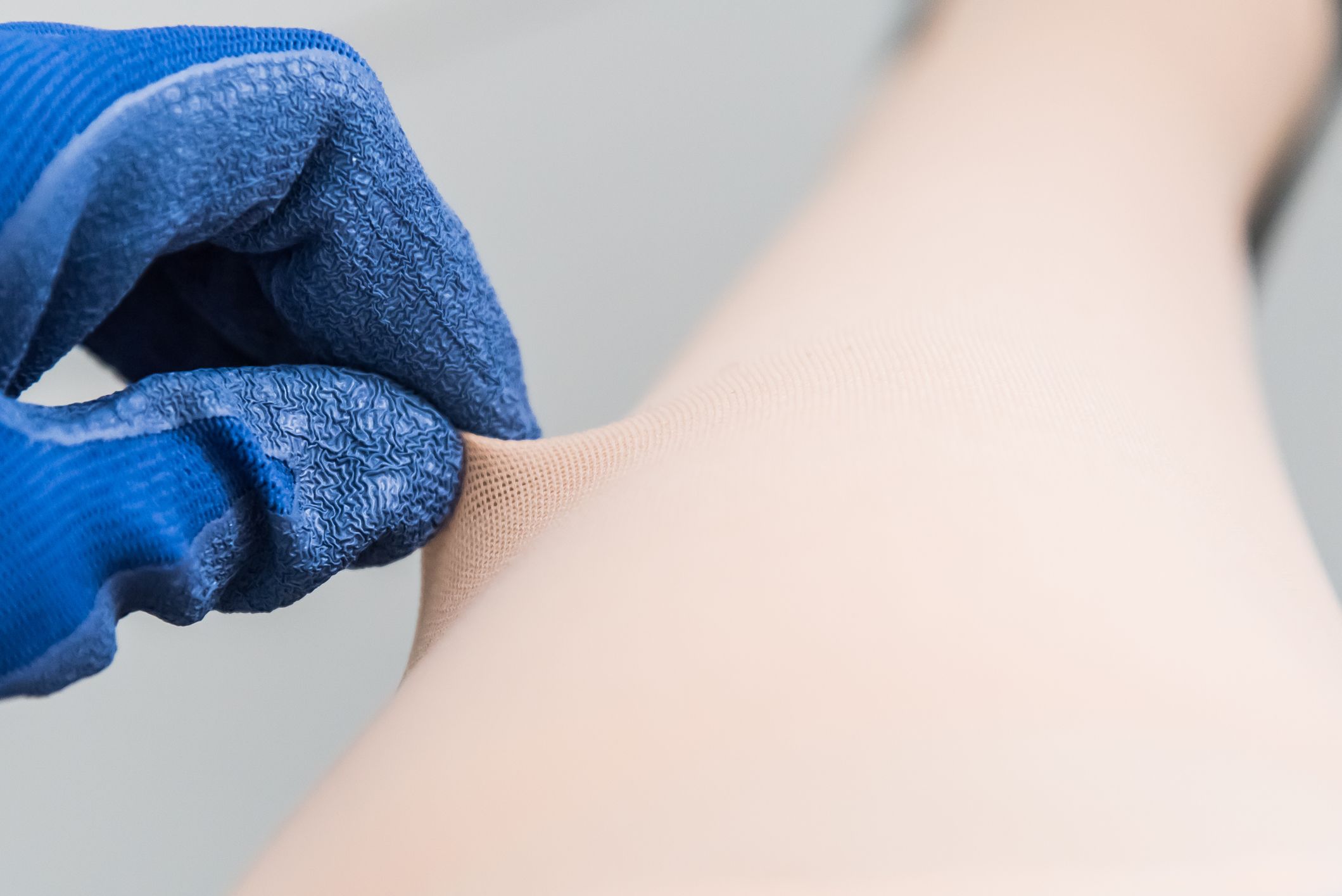Your thyroid is a butterfly-shaped gland found at the base of your neck that has a broad influence over a variety of bodily systems. When it is functioning properly, it makes hormones that regulate how fast your heart beats and how many calories your body burns. But its operation can become irregular, particularly as you get older and if you’re assigned female at birth.
Thyroid disorders include thyroid cancer, hypothyroidism (underactive thyroid), hyperthyroidism (overactive thyroid), and autoimmune thyroid diseases such as Hashimoto’s disease and Graves’ disease. According to endocrinologist Jack Merendino, MD, healthcare providers (HCPs) are now challenging some long-held beliefs about the diagnosis and treatment of thyroid disorders.
Hypothyroidism: Which hormones do I need?
Hypothyroidism means that your thyroid isn’t producing enough of the hormones it’s supposed to make. Symptoms can include fatigue and weight gain.
So how does hypothyroidism come about and what can you do about it?
The thyroid generates and releases two hormones, colloquially known as T4 and T3. These hormones influence all kinds of important body functions, including how your body uses and stores energy, your brain function, your weight, and even your breathing. Hypothyroidism results when your thyroid doesn’t produce enough of these hormones, often due to an autoimmune disease, certain medications, or thyroid surgery. In this case, you would likely need to take synthetic thyroid hormones to augment dwindling levels.
T3 is more important biologically and more potent, according to Dr. Merendino. But the conventional treatment for hypothyroidism is synthetic T4, he notes.
“The big question surrounds whether conversion of ingested T4 into T3 is adequate,” Merendino says. “Certain patients feel better when treated with both, but in the majority of cases, that’s not what’s done.”
People have different genetic variants of the enzyme that converts T4 into T3. “One thought that’s as yet unproven is that people who inherit the variant that’s less active might respond more favorably to combination T4 and T3 therapy,” Merendino says.
The synthetic form of T4 is easier to manufacture and store, says Merendino, while synthetic T3 “has a shorter shelf life.” T3 also fluctuates more in the bloodstream when taken in synthetic form.
“While T4 gives you a steady level of the hormone over 24 hours, if you take T3, the levels vary substantially over 24 hours,” says Merendino.
With home genetic testing becoming more common, Merendino says patients can easily find out which variant of the conversion enzyme (called deiodinase) they have.
“That information is out there and I think people who are doing their own testing will come in to HCP offices more,” says Merendino. If you’re not feeling better after trying T4 therapy, it might be time to consider combination therapy.
Autoimmune disease: The surprising link to the thyroid
“Autoimmunity is a major category of disease, and thyroid disease is the most common autoimmune disease,” says Merendino. “Autoimmune thyroid disease is overwhelmingly more common in women, by four- or fivefold.”
What’s more, if you have autoimmune thyroid disease, your chance of having other autoimmune diseases is increased.
One autoimmune disease that’s been rising in the public consciousness is celiac disease. One’s chances of having celiac disease is increased by anywhere from 2 to 5 percent for people with an autoimmune thyroid condition such as Hashimoto’s disease (which results in hypothyroidism) or Graves’ disease (which causes overactive thyroid). That said, Merendino says not to panic if this profile fits your situation.
“Many people think, ‘If I have thyroid disease then I have Celiac disease,’” he says. “But if you realize that about 5 percent or a little more of the population has an autoimmune thyroid problem, and about 5 percent of those people also have celiac disease, that’s fewer than 1 out of every 300 people who have both conditions.”
Thyroid cancer: Advances in diagnosis
Research has shown that incidence of thyroid cancer has increased dramatically since 1973. The question is, are more people getting thyroid cancer, or are HCPs getting better at finding it? Tellingly, while the number of new cases has gone up in recent decades, the number of deaths per year has not.
According to the American Cancer Society, this rise in cases owed in part to the use of imaging tests like CT or MRI scans performed for other medical problems that ended up detecting thyroid issues. These tests may detect small thyroid growths (or nodules) that otherwise would not be found. As more strict criteria for diagnosing thyroid cancer have been adopted, the incidence rate has declined by about 2 percent each year since 2014.
“Thyroid cancer is, by and large, not an aggressive cancer,” says Merendino. “Most patients don’t notice it. But we’re finding it more and more because it used to have to be big enough to feel.”
Since the 1980s, HCPs have used small needles to extract cells and look at them under a microscope. But now, says Merendino, genetic testing is “supplementing and may come to supplant looking at cells under a microscope.” That’s important, he says, because thyroid cancer cells don’t look much different than regular thyroid cells. If a nodule is bigger than a centimeter or so, he adds, it may need to undergo a needle biopsy, depending on how it looks on an ultrasound scan.
“The majority of people with nodules in my office have detected them because they’ve gotten a CT scan in their neck or a carotid ultrasound,” he says. “It’s showing more and more frequently. Over the last 40 or 50 years, the apparent incidence has risen dramatically but the death rate has hardly changed.”






